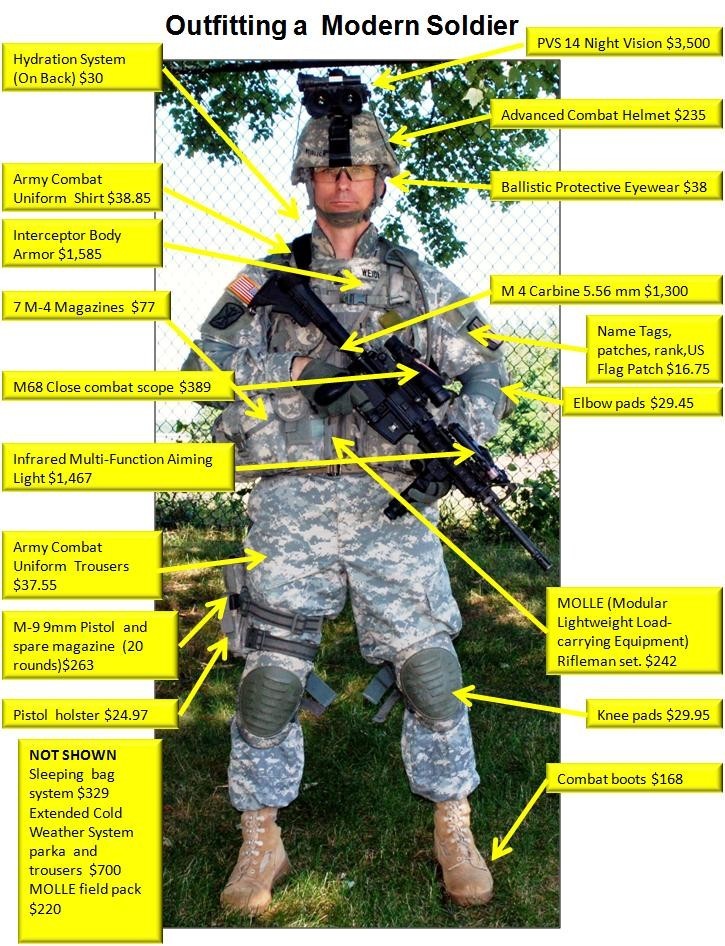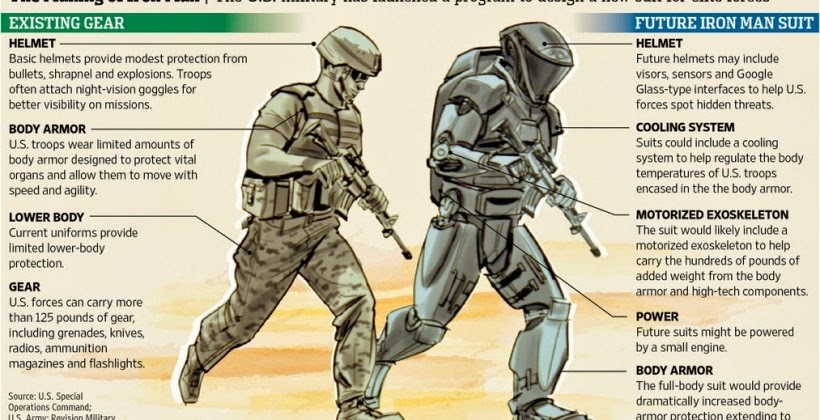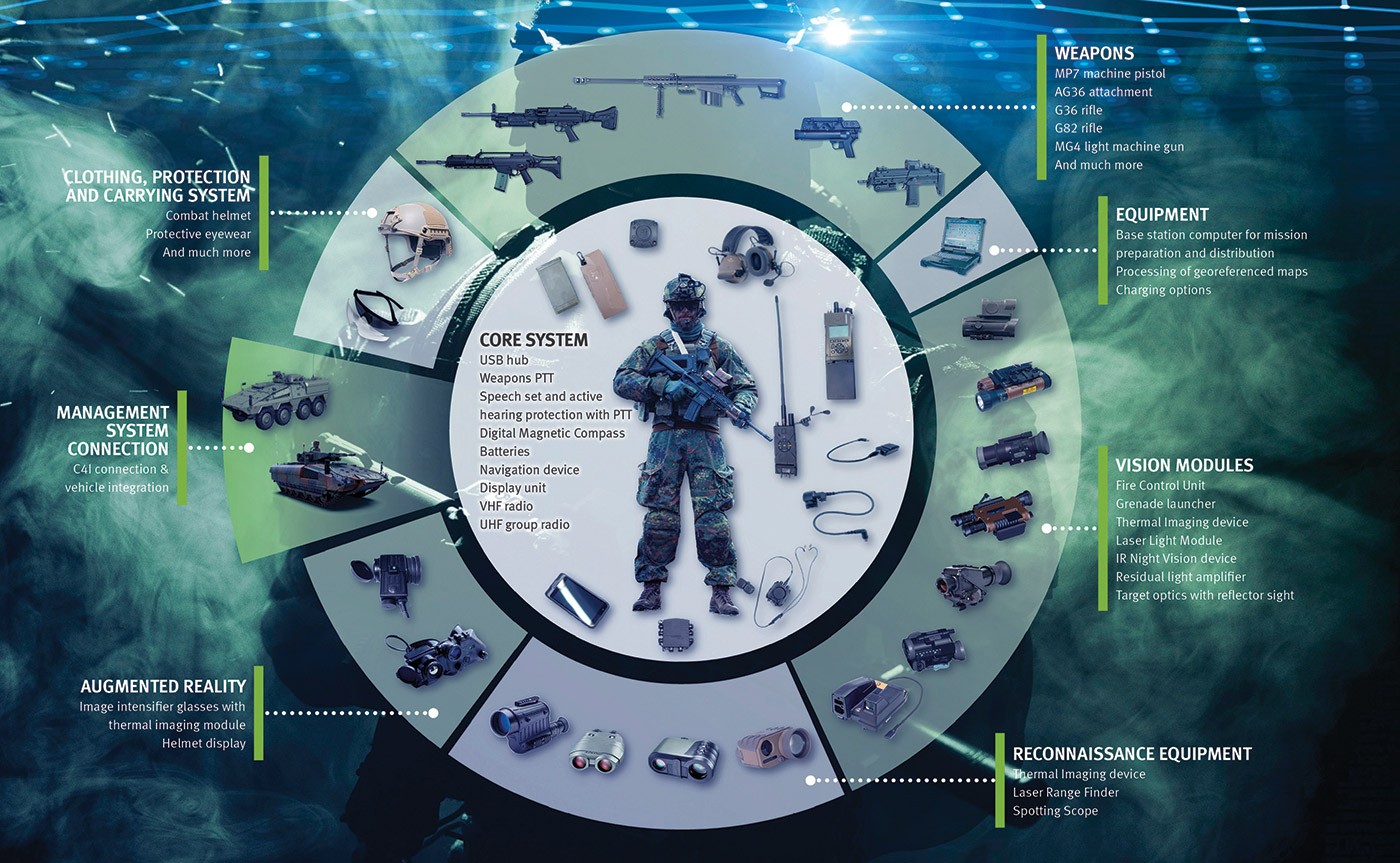When we’re talking about equipping a modern soldier in combat gear, we’re talking about 700,000 people out of about 1.3 million active military across the armed forces.

As you can see, this is by no means a cheap effort. If each soldier is equipped with say, $30,000 per solider (low end), that’s $21 million without including replacements.
What’s more, as wearables and materials technology advances, as well as making smaller more powerful computing, the future soldier will be even more a cross between human and machines.

The other aspect of these future soldiers is also that all this new equipment will be networked across the battlespace and stored for analysis far from the field of battle.
That new networked reality will lean heavily on AI to analyze terrain, combatants, and other aspects of the threats and opportunities.
It will even mean smart systems will be able to see a platoon struggling and determine if air support from drone swarms, helicopters, or aircraft is necessary.

The transition will integrate soldiers into a more complex system of support with the goal of fewer, smarter soldiers able to have a variety of support specific to their needs when they need them.
This integration comes from every component of the system.
Drone makers, like AeroVironment (NASDAQ: AVAV) or Redwire (NYSE: RDW) are there for soldiers, and for the bigger picture, drones from Northrop Grumman (NYSE: NOC) or Boeing (NYSE: BA).
On the secure communications side, L3 Harris (NYSE: LHX) will be a major player.
For the soilder, companies like Lockheed Martin (NYSE: LMT) and Honeywell (NYSE: HON) have been working on soldiers’ equipment for many years.

